What to do when your longing for this……

….but you’re out of this!

After “Turkey Day”, in observance of the post-feast ritual, all leftovers are carefully packaged away. The last time I hosted a turkey dinner, there was one whole turkey breast left, which I dutifully wrapped and stowed in the freezer for future hot turkey sandwiches. The problem was, there was absolutely no turkey gravy left to freeze with it – any remaining gravy was earmarked for the turkey pot pie we would enjoy later in the week.
What to do, then, when that carefully preserved turkey breast was promising a “Memories of Turkey Day” reprise a month later?
I am not a big fan of “gravy in a packet” or a can. I find commercial products very salty, and somewhat artificial-tasting. Fortunately, though, there is an easy solution. Two years of cooking school! (Just kidding.)
Here is a recipe for “No Bird Gravy”, which is actually a classic velouté sauce, if you took the course. I have included a couple of yield options, depending on how many hot turkey sandwiches you were hoping to make.
No Bird Gravy
Just a word about turkey broth: If you don’t make your own, you can often get pre-made turkey stock in tetra-boxes from Thanksgiving to Christmas, so lay in a couple of litres – it has a really long shelf-life. No-salt-added chicken broth, available in a couple of brands, is my current favorite if turkey stock is not available. Cooks Illustrated magazine just gave its seal of approval to the “Better than Boullion” bases, which seem to be pretty widely available. If you want a really complete rundown, you might want to check out this article from Serious Eats. It’s American, but it makes some good points.

Ingredients for one cup (for four cups)
1 cup (4 cups) Chicken or Turkey stock or broth (low sodium preferred)
1 sprig each (one bunch) Poultry Blend fresh herbs (thyme, rosemary sage)
OR dried whole-leaf herbs, 1/2 tsp each (2 tsp each)
OR the dreaded Poultry Seasoning
2 1/2 Tbsp (3/4 cup) Butter (substitute at your own risk)
2 Tbsp (1/2 cup) All Purpose Flour (see the note for gluten-free flour)
1 1/2 tsp (2 Tbsp) Soy Sauce, for salt and color
1/2 tsp (2 tsp) White Wine Vinegar (this really makes a difference)
DO NOT use distilled white vinegar — that’s cleaning fluid
To Taste Freshly Ground Black Pepper, and maybe a little salt.
FOR GLUTEN FREE GRAVY: Don’t make a roux with gluten-free flour — nothing good will come of that. Thicken your turkey stock with any of these starches: rice flour, cornstarch, arrowroot, potato starch, tapioca starch. Make a slurry of 1 Tbsp of starch and 1 Tbsp of water per cup of broth. Add the slurry a little at a time, and simmer for a minute after each addition. Each starch has a slightly different thickening power and finished texture. I’m using rice flour most of the time.

Method:
Warm the broth for the smoothest gravy. If you have fresh herbs, simmer them with the broth for about 10 minutes. I often do this in the microwave. For a big batch, tie the herbs in a bundle with a bit of cotton string, so you can remove them easily before adding the warm broth to the roux you’re going to make. If you have dry whole-leaf herbs, you can steep them in hot broth in a tea-ball, or make a little sachet with cheesecloth and string, for 10 to 15 minutes. If you don’t have fresh or whole dried herbs, just warm the broth, and season the finished gravy with finely-ground poultry seasoning after it has thickened.
In a saucepan, melt the butter. Stir in the flour to form a smooth paste. If you watch Food TV at all, you’ll recognize this as a “roux”.


The secret to beautifully-flavored no-bird gravy is taking the time to cook this roux until it is about the same shade as peanut butter. Browned butter and flour has a delicious flavor — it will smell like shortbread cookies.
The reason there is more butter than flour is that the water in the butter will evaporate while the roux is browning, and it’s easier to manage if it starts out a little “wet”. The roux can go from brown to black pretty quickly if unattended, so don’t use very high heat. Do keep stirring, and have that broth ready to go so the perfectly browned roux doesn’t have to sit: it will continue to cook even if you turn the heat off. The darker the roux, the less thickening power it has, by the way.


When the roux is the color you want, reduce the heat and whisk or stir in about half of the broth. Make sure to incorporate all the roux – don’t leave any in the corners. Return the saucepan to the heat; cook and stir until thickened — it will take a minute or two to thicken completely. Adding only part of the broth results in a very thick mixture, but if you stir it well (you might want to use a whisk) there will be no lumps in your gravy when you add the rest of the broth.
Add reserved broth until you get exactly the consistency you were hoping for. You may need a little more, or a little less, depending on how brown your roux got, and your personal preference. Classically, the finished sauce should be velvety smooth, and should coat the back of a spoon. The final test is to leave a clear trail when you run your finger through the sauce on that coated spoon.

And now, of course, you taste!
Season with soy sauce, white wine vinegar, salt (if needec) and black pepper (freshly ground is best), and poultry seasoning if that’s what you’re using. Give the gravy a few minutes on very low heat for the flavor to even out, and enjoy!
You can make pretty decent beef gravy the same way, using beef broth of course. If you want a beefier-looking finished product, then keep a bottle of Kitchen Bouquet on hand, and add it sparingly until you’re happy with the color.


Just a Tip for Turkey Day Next Time….
There is lots of flavor and color in the browned bits on the bottom of the pan under the classic presentation bird (cheffy people call that ‘fond’). Lots of folks add flour to the fat in the pan, and make their gravy just like their mother and grandmother used to do. If you strain it to get out the lumps and the bits you don’t want, you have “heritage” gravy, and you should be proud of yourself.
I’m a do-ahead sort of person, so when I’m preparing for a turkey feast, I make 4 cups of nice thick No Bird Gravy a day or so ahead of the big event, and tuck it away in the fridge. IF I was to roast a whole bird (and you know I don’t), when the turkey is ceremoniously removed from its roasting pan and set aside to rest before carving, I would pour ALL the excess fat out of the roasting pan (holding on to any dark, flavorful juices), deglaze the pan with white wine (that just means I put a cup or so of white wine in the pan and boil the dickens out of it, scraping up and dissolving all those browned bits we were talking about), and then I would pour in my pre-made gravy, heat the whole works together, and call the folks to dinner! This saves a bit of fuss, and removes all worry concerning the quality of the gravy (flavor and texture) with an audience at the table, and it’s a guaranteed success!
Of course, depending on how many folks you’re feeding (and whether they will still be there for breakfast), there still won’t be any gravy left for those hot turkey sandwiches a month down the road. Now you know how to solve that little dilemma!


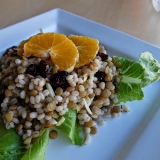
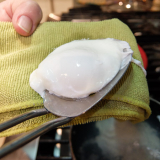
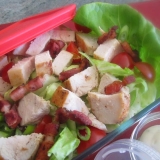
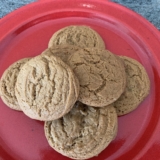
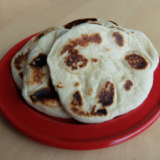
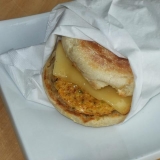
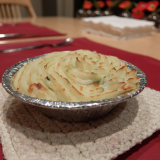
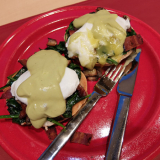

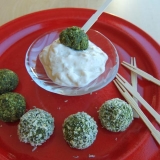

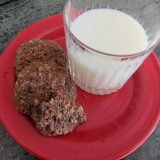
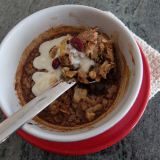
Leave A Comment